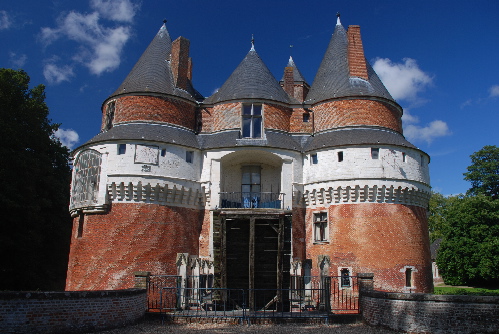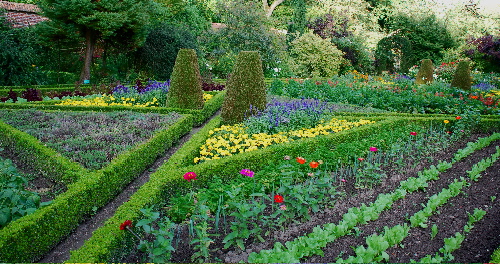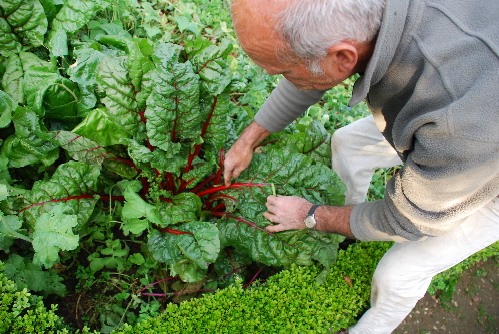I recently visited a chateau in Normandy from the late medieval period, apparently a classic instance of the military architecture of the era. My visit lead to this little poem:
The Unguided Tour of Chateau Rambure
Chateau Rambure,
a place where the recreated castle atmosphere evoked the epoch of French chevaliers to all of us on our guided tour,
but made me imagine the explorations that were still waiting to be made in jungles and deserts all over the planet,
as a French lord sat down to eat dinner in the dining room,
or a nineteenth century gentleman padded down the stairwell with pigeons cooing outside,
then the lady in her long dress going down the wide stone stair case past the worthy oil ancestors while the sun fell outside,
as it did year after year on the villages of Normandy in summer,
the immemorial peace of the oak leaves still there to the east, century after century.
And the still mysterious Amazon standing entire,
the unphotographed highlands of Papua New Guinea, still bursting with tongues,
the massive shoals of cod still swimming off the coast of Canada,
the thylacine savaging a frog on the bank of a Tasmanian marsh,
the albatross sailing and falling, unthreatened through the smooth blues of the South Pacific,
blank spaces on the map,
dark spaces in the mind of a chevalier.
A rustle of breeze in the green oak leaves beyond the window,
the murmur of Europe’s twenty-first century as I turn and rejoin my companions on our guided tour.

We also visited the Chateau de Digeon, a much smaller nineteenth century chateau. My friend’s cousin has ownership of this place. We stopped and talked with them. Both in their sixties, grey hair, animated and friendly. Bruno Goisque-Thienpont showed us his gardin potager. It is a formal garden in the Italian style, but with a very important twist: all of the formal hedges are there to accentuate the beauty of the flourishing vegetable garden that lies within the borders. Bruno talked of how vegetables are beautiful plants, and how he likes to display them, having cucumbers climbing along a little fence on the borders for example, or laying down seeds in horizontal lines. He and his family eat mainly vegetables, and little meat. It was refreshing to find the owner of such an apparently aristocratic house so in touch with the earth. Beneath his finger nails was a thick layer of black soil, and beneath his ownership of part of Frances cultural patrimony lay a green political agenda. They actually have a couple of rooms for people to stay in a bed and breakfast setting, and I’m going to recommend to my friends to stay at this place. If William Morris’s dictum to have nothing in your house which isn’t beautiful or necessary is true indoors, then Bruno has shown how to take this idea into the garden. The ‘jardin potager’ (kitchen garden) is a masterpiece, constantly maintained by Bruno and his wife, a masterpiece of garden design. Beauty for the eye and nourishment for the body sit quietly and synonymously within the old garden walls. In a well looked after garden in the middle of the Normandy countryside grow tastes for the plate and the gourmet’s palette and pleasing shapes for the aesthetic idler. That evening we ate salad leaves and beans and other produce from the garden for dinner around a long table in the kitchen, and drank a kind of pear cider Bruno’s son had brewed in an old wooden cider press earlier in the year from pear trees in the garden. Slow food movement devotees eat your heart out. What is more, these guys have been doing a kind of French aristocratic permaculture from before Bill Morrison even published a handbook. Not much English here – to hear Bruno talk about it in his enthusiast and articulate French you’ll have to learn a decent amount of the native tongue.
Here is Bruno searching for something he was going to show me.
Beauty and utility…


